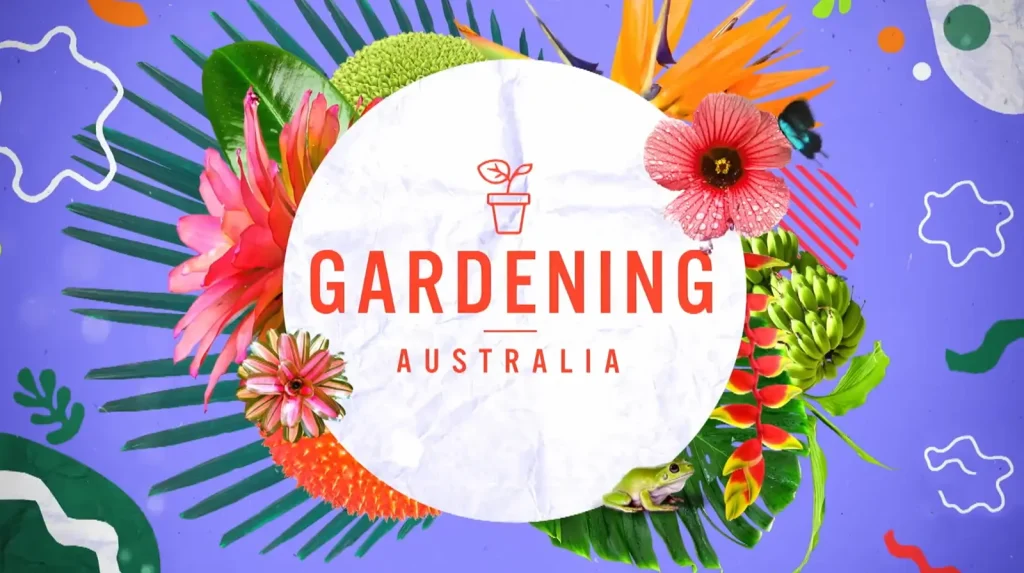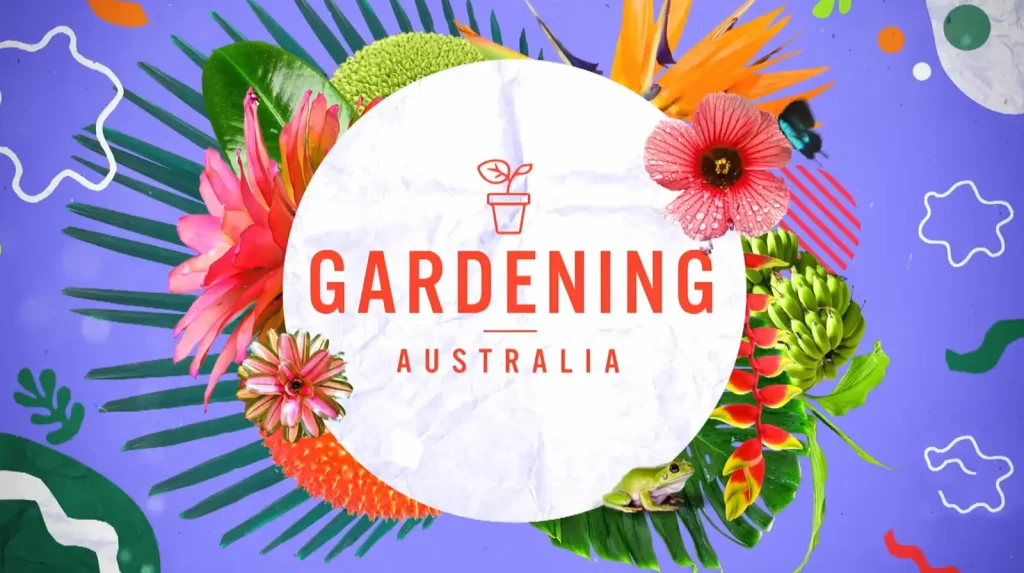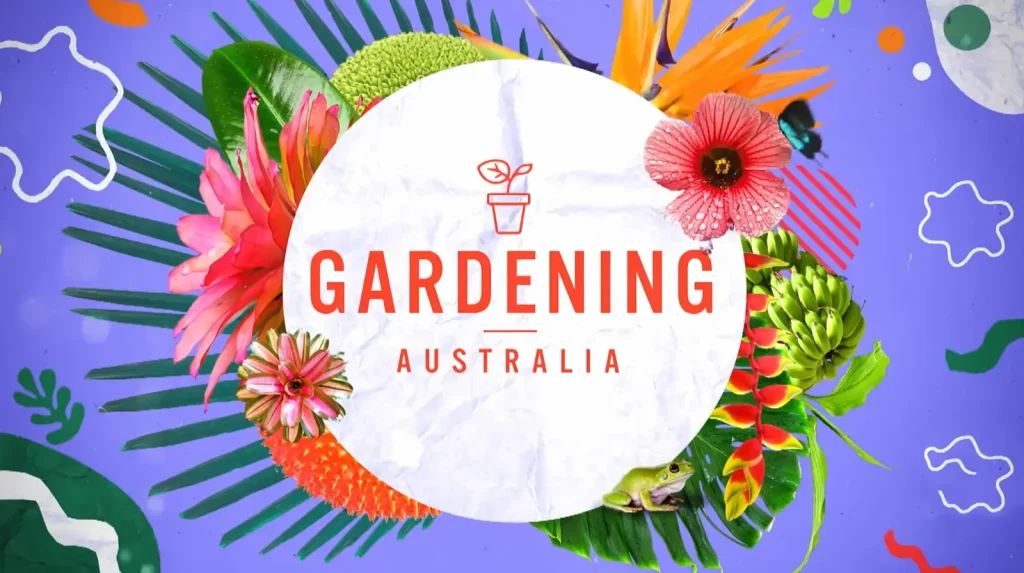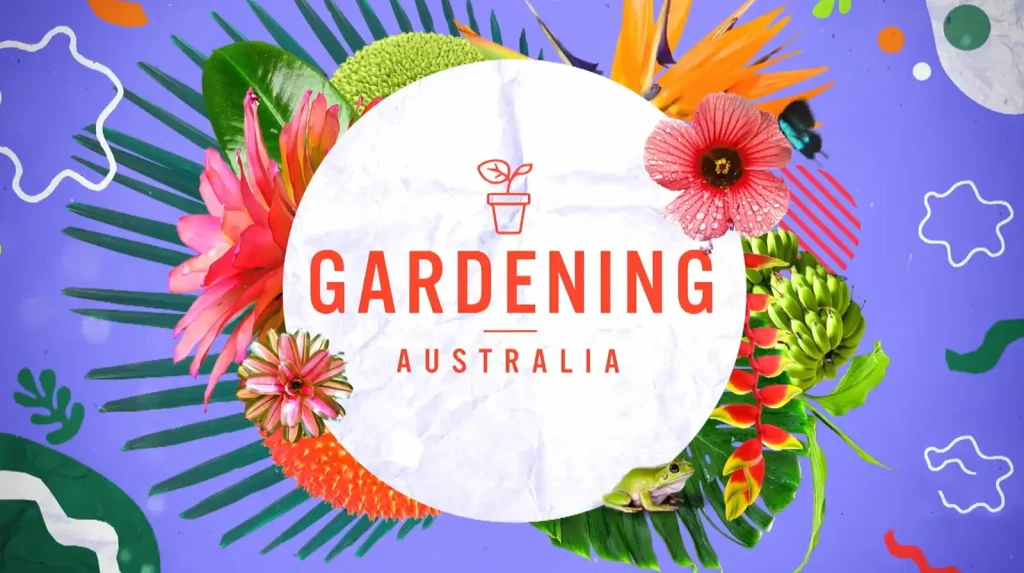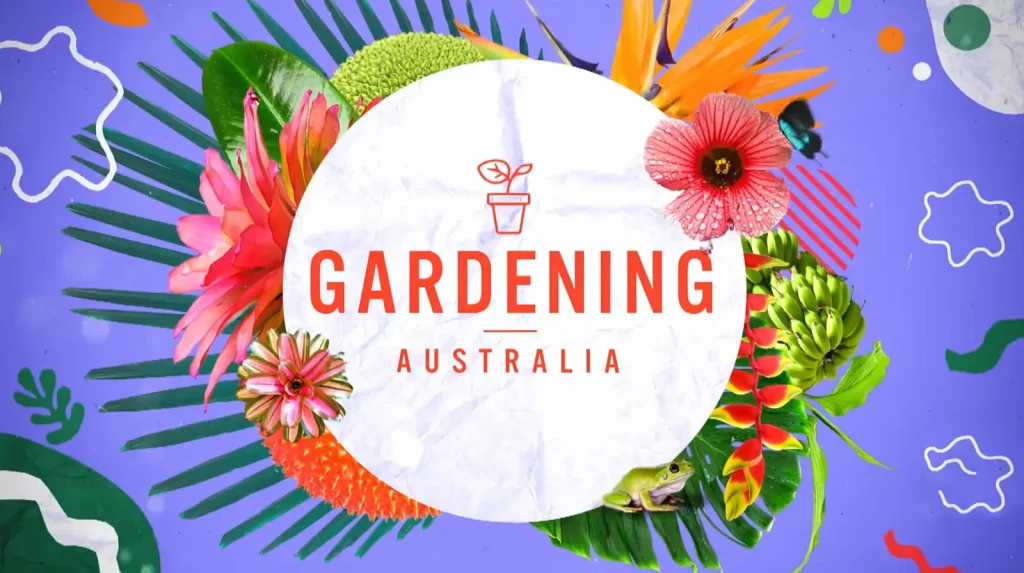Gardening Australia 2024 episode 1 – In the captivating premiere of Gardening Australia’s 2024 season, viewers are treated to an array of enriching segments that delve deep into the heart of gardening and nature exploration. The episode unfolds with Jane’s insightful journey into the world of blueberries, where she meticulously selects the most exquisite specimens. Her segment is not merely a lesson in picking fruit; it’s an educational tour that highlights the intricacies of soil, climate, and care that culminate in the perfect harvest.
Next, we’re whisked away with Costa as he ventures into the enchanting realm of Woodford. This segment is more than a simple visit; it’s an immersive experience that allows viewers to dip their toes into the local culture, understand the unique botanical aspects, and appreciate the community’s connection with their environment. Costa’s exploration is a testament to the profound impact of gardening and green spaces on urban settings and community well-being.
Tammy then takes the spotlight, generously sharing secrets that only the most adept landscape designers are privy to. Her advice bridges the gap between professional landscaping and home gardening, offering viewers practical tips and creative ideas to transform their outdoor spaces. Tammy’s approachable manner demystifies the art of landscaping, making it accessible to gardeners of all skill levels.
The episode takes a turn towards the scientific with Clarence’s exploration of a new herbarium. This segment does more than introduce a repository of plant specimens; it opens up a world of botanical research, conservation efforts, and the crucial role herbaria play in understanding plant diversity and history. Clarence’s journey is both an educational tool and a call to action for the preservation of plant life.
Jerry’s segment introduces his latest plant haul, showcasing an array of unique and exotic species that are bound to captivate the audience. His enthusiasm is infectious, as he delves into the origins, care, and remarkable features of each plant. Jerry’s presentation is a treasure trove of information for enthusiasts eager to expand their collections with rare finds.
Finally, the episode concludes with an inspiring encounter with a photographer dedicated to taking portraits of birds within their natural habitats. This segment transcends traditional gardening, highlighting the symbiotic relationship between flora and fauna. The photographer’s passion and skill in capturing the essence of these creatures offer a poignant reminder of the beauty and diversity of life that gardens support.
Throughout the episode, Gardening Australia’s 2024 premiere seamlessly blends education, inspiration, and entertainment. Each segment, rich in detail and beautifully narrated, encourages viewers to engage with their environments, whether through cultivating their gardens, appreciating local ecosystems, or exploring the intersections of art, science, and nature. This episode not only sets the tone for the season but also reinforces the show’s commitment to fostering a deeper connection between people and the planet.
Gardening Australia 2024 episode 1
Building Blueberries
Blueberries, a beloved staple in both culinary and gardening circles, have woven their way into the fabric of Australian culture and agriculture in a relatively short span of time. The journey of these nutritious, vibrant berries into Australian hearts began in earnest in the 1980s, marking the start of a remarkable chapter in the country’s agricultural history. Jane delves into this fascinating story, visiting the pioneers of blueberry farming who share invaluable insights into cultivating these berries.
In the heart of a region an hour east of Melbourne, lies a flourishing blueberry farm owned by Sue Keon-Cohen. This green oasis stands in stark contrast to its original state—a dry, barren paddock purchased by Sue’s late husband, Chester, in the 1980s. The purchase came as a complete surprise to Sue, a then suburban physiotherapist with no dreams of rural life or farming expertise. Yet, this unexpected turn of events laid the groundwork for a thriving blueberry enterprise that would grow from their shared efforts and resilience.
From Bare Paddock to Blueberry Haven: The Keon-Cohen Family’s Journey
Starting with the planting of their initial bushes in November 1982, Chester and Sue embarked on their agricultural journey under challenging conditions, watering their crops by hand from a nearby dam, a testament to their dedication. The decision to cultivate blueberries, encouraged by the agriculture department, was a leap of faith, especially considering they had little to no experience with the fruit at that time.
Sue’s passion for gardening fueled their progress, and today, the farm boasts around 2,500 blueberry plants spanning 7 acres. Their son, Ed, who initially pursued a career in law enforcement, has since joined the family venture, finding solace and therapeutic value in the rhythms of farm life after leaving the police force due to post-traumatic stress.
Drawing on four decades of experience, Sue and her family have distilled their journey into a trove of wisdom for aspiring blueberry growers. Among her tips, Sue emphasizes selecting varieties that match one’s local climate and purchasing from local growers when possible. She advises against allowing first-year plants to bear fruit, recommending the removal of flowers to encourage stronger plant establishment. Sue highlights the importance of soil conditions—acidic and rich, with a pH between 4.0 to 5.0—alongside the necessity of regular watering, good drainage, and the use of mulch to maintain soil moisture, reduce weed growth, and enhance soil quality. Pruning during winter is crucial for maintaining plant shape and boosting yield, and she notes that blueberries must be picked as they ripen, as they do not ripen off the bush.
Mastering the Art of Blueberry Farming: Tips and Triumphs from Down Under
Sue’s favorite among the wide array of blueberry varieties now available in Australia is the ‘Brigitta’, an Australian-bred variety known for its lushness and flavor. Despite blueberries’ initial association with cool climates and peaty soils, breeding efforts have expanded their cultivation across Australia, with the exception of the Northern Territory. This adaptation includes varieties suited for warmer climates and those requiring fewer chill hours, alongside both deciduous and evergreen types. While some are self-fertile, cross-planting with another cultivar enhances pollination and fruiting.
The story of blueberries in Australia, as shared by pioneers like Sue Keon-Cohen, is a narrative of adaptation, perseverance, and the joy of gardening. It’s a testament to the country’s ability to embrace new crops and integrate them into its agricultural landscape, enriching the diversity of its produce and the lives of those who cultivate and enjoy these delightful berries.
New Kids on the Block
Jerry’s garden is a testament to his insatiable curiosity and passion for horticulture. It’s a living laboratory where new plants are always welcome, and innovative gardening techniques are constantly in trial. Jerry’s enthusiasm for botanical exploration has led to the introduction of several intriguing species to his collection, each with its own unique story.
Galapagos Tomato: A Taste of Evolution
One of the recent stars in Jerry’s garden is the Galapagos Tomato (Solanum cheesmaniae), a fascinating plant native to the Galapagos Islands. Unlike the common tomato, these plants yield small, cherry-sized fruits that are not only delectable but also demonstrate remarkable heat tolerance, making them well-suited to the humid conditions of Queensland. This resilience against heat and disease has captured Jerry’s interest, prompting him to save seeds on paper towels for future propagation. The Galapagos Tomato represents more than just a food source; it’s a piece of evolutionary wonder, thriving in Jerry’s garden as a testament to nature’s adaptability.
Black Bat Plant: Embracing the Exotic
The mysterious allure of the Black Bat Plant (Tacca chantrieri) has also found a place in Jerry’s collection. Despite his three-year-old seedling not having flowered yet, its potential has inspired Jerry to delve deeper into the genus. His exploration led to the discovery of the Giant Bat Plant (Tacca integrifolia), notable for its striking, large white flowers. Alongside this, Jerry has introduced the Polynesian Arrowroot (Tacca leontopetaloides) to his garden, a plant that marries beauty with utility through its starchy root tubers. Preparing these tubers involves a meticulous process of thin slicing and soaking to remove the astringent taste, a testament to Jerry’s commitment to both the aesthetic and practical aspects of gardening.
Lemon Aspen: Citrus of the Rainforest
Another gem in Jerry’s garden is the Lemon Aspen (Acronychia acidula), a tree native to central northern Queensland. This upland rainforest species is now cultivated commercially for its tangy fruit, which adds a zesty flavor to culinary creations. In its natural habitat, the Lemon Aspen can tower to 20 meters, but Jerry has managed to maintain his specimens at a manageable height of 4-5 meters through careful pruning. This practice underscores Jerry’s ability to adapt wild species to the domestic garden, bringing the essence of the Australian rainforest into his backyard.
Propagating Backscratcher Ginger: Innovation in Reproduction
Jerry’s innovative spirit shines through in his propagation of Backscratcher Ginger (Tapeinochilos ananassae). Cultivating two species, one native and one from New Guinea, he observed that some stems produced aerial roots at the nodes. Seizing upon this natural clue, Jerry embarked on an experiment to propagate new plants from these aerial roots. By cutting below the node and planting the cutting in fresh potting mix, then placing it in a protective environment that shields from cold winds while allowing sunlight, Jerry found success. This method, augmented with the use of an old lace curtain for shade, has enabled him to cultivate several new plants, showcasing his innovative approach to garden challenges.
Jerry’s garden is more than a collection of plants; it’s a narrative of exploration, experimentation, and environmental adaptation. Each plant, from the heat-resilient Galapagos Tomato to the exotic Black Bat Plant, and from the commercially valuable Lemon Aspen to the innovatively propagated Backscratcher Ginger, tells a story of discovery and passion. Jerry’s dedication to pushing the boundaries of gardening not only enriches his garden but also provides invaluable insights and inspiration to fellow garden enthusiasts. Through his journey, we learn that gardening is not just about growing plants; it’s about growing possibilities.
Protecting Seedlings
In the bustling ecosystem of Millie’s garden, where the soil teems with life, from industrious earthworms to various beneficial insects, there lies a challenge that many gardeners face. The rich, lively earth attracts birds, which, in their search for a meal, can wreak havoc on the tender roots of plants and seedlings. Their relentless scratching not only creates a disorderly mess but poses a significant threat to the fragile lives of newly sprouted greens. This disturbance can lead to the devastating loss of seedlings, a setback for any gardener looking forward to the fruits of their labor.
Covering larger areas or entire rows to protect these young plants is a common practice, but what happens when the challenge is to shield smaller, more intricate spaces within the garden? Millie, ever the innovator, has devised a brilliantly simple yet effective solution to this problem.
Her approach utilizes materials that are readily available, yet often overlooked — discarded wire mesh drawers from old storage units or even abandoned shopping trolleys, frequently found at local tip shops or seen discarded on the side of the road. These pieces of wire mesh, initially designed for a completely different purpose, find a new lease on life in Millie’s garden. By placing them upside-down over the vulnerable seedlings or nestled between plants, they form a protective barrier against the foraging birds. This ingenious method not only safeguards the seedlings, allowing them to thrive without disturbance but also contributes to the recycling and repurposing of materials that would otherwise contribute to waste.
What makes this solution particularly appealing is its convenience and efficiency. Once the seedlings have grown to a size where they’re no longer at risk from the birds, these wire mesh protectors can be easily removed. Their design allows for them to be neatly stacked and stored away, taking up minimal space until they are needed again in the next planting season. This cycle of use and reuse not only benefits the garden but aligns with sustainable practices by giving new purpose to items that have outlived their original use.
Millie’s method is a testament to the creativity and resourcefulness that gardening inspires. It shows how challenges within the garden can lead to innovative solutions that are both effective in protecting plant life and contribute to a cycle of sustainability and respect for the environment. Through such practices, gardeners not only cultivate plants but also a deeper connection with the ecosystem and the principle of stewardship over the resources we have at our disposal.
Seed Banking
Embarking on a fascinating journey behind the scenes, Clarence explores the heart of botanical conservation and research at the national herbarium of New South Wales, located at the scenic Mt Annan. This visit unveils the critical and often unseen work that goes into preserving Australia’s rich botanical heritage.
The Living Library of Plants
At the herbarium, Clarence is greeted by Dr. Hannah McPherson, the collection manager, who introduces the herbarium as a unique library. However, instead of books, this library houses an extensive collection of plants. Dr. McPherson explains that most of the collection comprises carefully dried plant specimens, each accompanied by vital information that researchers and scientists might need. This information includes the plant’s taxonomy, geographic origin, and ecological role, among other details. The herbarium serves as an invaluable resource for understanding the diversity and complexity of plant life, facilitating research that ranges from ecological studies to conservation efforts.
Architectural Marvel and Environmental Stewardship
The design of the herbarium itself is a marvel, inspired by the waratah seed pod. A large domed roof crowns the structure, providing protection and a unique aesthetic that complements the natural surroundings. The buildings are constructed with rammed-earth walls, about 45cm thick, offering excellent insulation. This thoughtful design ensures the interior remains cool and dry, providing an ideal environment for preserving the plant specimens against pests, mold, and fire hazards. This architectural choice reflects a deep commitment to sustainability and environmental stewardship, echoing the herbarium’s mission to protect and study plant life.
A Hub of Botanical Discovery and Public Engagement
The herbarium is not just a repository of plant specimens; it’s a dynamic center of botanical discovery and public engagement. Dr. McPherson highlights the botanical identification service, an invaluable tool for the public and professionals alike. Whether it’s a homeowner curious about an unusual plant in their garden or authorities needing assistance with identifying illegal cannabis crops, the herbarium provides expert identification services. This function underscores the herbarium’s role in biosecurity, public education, and even legal assistance.
Botanist Peter Jobson shares with Clarence the meticulous process of identifying specimens like the spotted emu bush (Eremophila maculata), detailing how a farmer’s concern over his cattle’s health led to a botanical investigation. This example illustrates the herbarium’s crucial role in linking botanical science with practical, real-world applications, impacting agriculture, health, and conservation.
Volunteers, including talented botanical illustrators like Catherine Wardrop and Lesley Elkan, are instrumental in bringing the herbarium’s work to life. They create detailed, precise illustrations that not only aid in the identification process but also enrich the digital archives accessible worldwide. These digital resources, including over 1.1 million images, are a testament to the herbarium’s commitment to sharing knowledge and fostering a global understanding of plant biodiversity.
Pioneering Research and Global Contributions
The herbarium is also a forefront of pioneering botanical research. Senior research scientist Dr. Russell Barrett’s discovery of a new species of Ironwood highlights the ongoing exploration and identification of plant species within Australia’s diverse ecosystems. The discovery of such species, with unique properties like the toxin found in Ironwood, showcases the importance of the herbarium’s work in understanding ecological balances, evolutionary biology, and potential applications in medicine and agriculture.
Moreover, the herbarium’s digital database serves as a critical tool for tracking environmental changes. By analyzing flowering times and the geographical distribution of plants over time, scientists can gain insights into climate change impacts, habitat shifts, and conservation needs. This data is crucial for developing strategies to protect Australia’s natural heritage and adapt to a changing world.
A Beacon of Botanical Knowledge
The national herbarium of NSW at Mt Annan stands as a beacon of botanical knowledge and conservation. Through its extensive collection, innovative architecture, and commitment to public engagement and research, the herbarium plays a pivotal role in preserving the past and shaping the future of Australia’s plant biodiversity. Clarence’s visit sheds light on the vital work being done behind the scenes, celebrating the herbarium as a cornerstone of scientific discovery and environmental stewardship.
F.A.Q. about Gardening Australia 2024 Episode 1
Q1: What can viewers expect from the premiere of Gardening Australia’s 2024 season?
A.: The premiere of Gardening Australia’s 2024 season offers an enriching array of segments that dive deep into gardening and nature exploration. Viewers can look forward to educational tours, insights into local cultures and botanical aspects, professional landscaping tips, scientific explorations, and unique plant showcases. Each segment is designed to engage, inspire, and entertain, encouraging viewers to connect with their environment.
Q2: How does Jane’s segment on blueberries contribute to the episode?
A.: Jane’s segment on blueberries is not just about selecting the finest specimens; it’s an educational journey highlighting the importance of soil, climate, and care in achieving a perfect harvest. Her exploration into the world of blueberries provides valuable insights into the cultivation of these nutritious berries, offering viewers practical advice on variety selection, soil preparation, and plant care.
Q3: What makes Costa’s venture into Woodford special?
A.: Costa’s venture into Woodford stands out as an immersive experience that goes beyond a simple visit. It delves into the local culture, botanical uniqueness, and the community’s environmental connection, showcasing the profound impact of gardening and green spaces on urban settings and community well-being. This segment emphasizes the importance of integrating nature into our living spaces for a healthier, more sustainable lifestyle.
Q4: How does Tammy bridge the gap between professional landscaping and home gardening?
A.: Tammy bridges the gap by sharing secrets known to adept landscape designers, making professional techniques accessible to home gardeners. Her practical tips and creative ideas aim to inspire viewers to transform their outdoor spaces, regardless of their skill level. Tammy’s approachable manner and clear guidance demystify the art of landscaping, making it an achievable goal for garden enthusiasts everywhere.
Q5: What unique contributions does Jerry’s segment offer to the audience?
A.: Jerry’s segment introduces viewers to a range of unique and exotic plant species, expanding the horizons of plant enthusiasts. His infectious enthusiasm and detailed explanations on the origins, care, and remarkable features of each plant turn his presentation into a treasure trove of information. This segment is particularly captivating for those looking to enrich their gardens with rare and fascinating finds.
Q6: How does the episode highlight the relationship between flora and fauna?
A.: The episode transcends traditional gardening by featuring a photographer dedicated to capturing birds within their natural habitats. This segment underscores the symbiotic relationship between plants and wildlife, reminding viewers of the beauty and diversity of life supported by gardens. It’s a poignant reminder of the crucial role gardens play in maintaining biodiversity and the natural balance.
Q7: What overarching themes are prevalent throughout Gardening Australia’s 2024 premiere?
A.: The overarching themes include the educational value of gardening, the inspiration drawn from nature, and the entertainment derived from exploring the vast world of horticulture. The premiere seamlessly blends these elements to foster a deeper connection between viewers and the planet, emphasizing the role of gardening in enhancing environmental awareness, community well-being, and personal fulfillment.
Conclusion Gardening Australia 2024 episode 1
In conclusion, the premiere episode of Gardening Australia 2024 serves as a vibrant tapestry of gardening wisdom, environmental stewardship, and community engagement. Through its meticulously curated segments, the episode not only educates but also inspires viewers to cultivate a deeper connection with the natural world. Jane’s insightful exploration into blueberry cultivation, Costa’s immersive experience in Woodford, Tammy’s practical landscaping tips, Clarence’s delve into botanical research, and Jerry’s introduction to exotic plants all contribute to a richly diverse narrative. These stories highlight the multifaceted nature of gardening — from the scientific to the aesthetic, from the practical to the profoundly spiritual.
Moreover, the episode underscores the symbiotic relationship between flora and fauna, reminding us of the broader ecological web to which gardens are intrinsically linked. This holistic approach to gardening encourages viewers to appreciate not just the beauty of individual plants but also the complex ecosystems they support. Gardening Australia’s 2024 premiere exemplifies the show’s enduring commitment to fostering a deeper appreciation for the planet, promoting sustainability, and encouraging viewers to engage actively with their environments.
As we reflect on the episode, it becomes clear that gardening is more than a hobby or a profession; it is a powerful medium for change, capable of enhancing biodiversity, supporting mental health, and building resilient communities. The knowledge shared in this episode equips viewers with the tools and inspiration needed to transform their outdoor spaces, contribute to environmental conservation, and enrich their lives through the joys of gardening. Gardening Australia continues to be an invaluable resource for gardeners of all levels, championing the role of gardening in creating a more sustainable, connected, and beautiful world.
